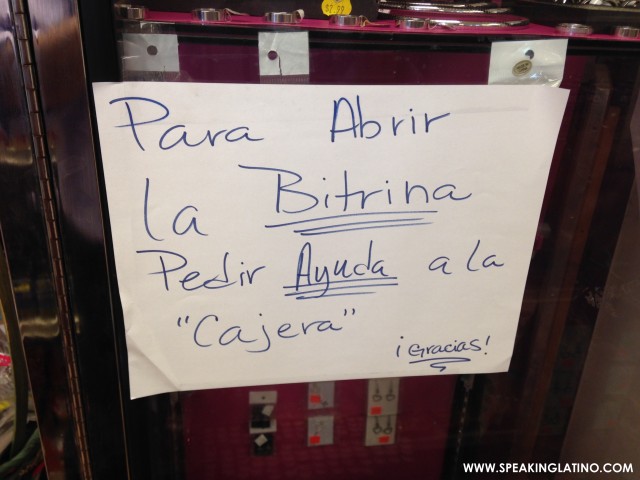Overall, spelling in Spanish is pretty straightforward and easy. It’s one of the many reasons I love Spanish. If you can pronounce a word in Spanish, you can generally spell it correctly. However, there are a few common mistakes. Interestingly enough, these are more often made by native speakers than those who study Spanish as a foreign language.
The best explanation for this is that native speakers learn orally, and these spelling mistakes cannot be detected orally, while students study through books and see the words written out much more often than they hear them.
Spelling Spanish Words: Language Mistakes That Even Natives Make

1. Switching up V and B
The V in Spanish is pronounced basically exactly like the B. In fact, when spelling things out, many people say “b larga” and “v corta” or “uve” to distinguish between the two. It’s common for native speakers to use V instead of B such as huviera instead of hubiera or vendito instead of bendito. Be careful of some V/B situations, like the verbs andar and estar which have conjugations where the word is written with B and other conjugations written with V.
2. Y and LL
In Spanish, the double L (ll pronounced “elle”) is pronounced just like the Y, so this is the same situation as with the V and B. Due to the fact that they are pronounced the same, it is not uncommon to words written incorrectly such as alluda instead of ayuda or lla instead of ya. You will see that there are more rules for the use of Y than for the LL.
3. Leaving out the H
Since the H is silent in Spanish, many natives simply omit it when writing. This is not a big deal for words like abía instead of había, but it can occasionally change the meaning. For example, hola means “hello” while ola means “wave”. Of course, context will usually clear up any confusion.
4. C, S and Z
Latin American pronunciation is distinguished by the seseo, or the pronunciation of S, C and Z as S. This is different from the ceceo of Spain where these sounds are closer to Z (similar to English TH pronunciation in think). As in other letter sets, these three letters may have the same pronunciation, as in necesito or casar/cazar. The result is common mis-spellings such as nesecito or cazar when the word casar is meant. The most common mistakes occur with the pair C and S when C is combined with vowels E or I (when the vowels A, O and U combine with C the sound is a hard C sound, like a K). With the seseo, the sound –ce- and -ci- are the same as –se- and –si- and this is when the confusion comes in.
5. G and J
Since G and J can be the same sound (as in jalea and gelatina), the two are often juxtaposed when writing out words. As an example, take a look at the photo in this recent post on a Language Learning: Spanish for DRINKING STRAW. You will see that the fruit naranja is spelled incorrectly with a G. This photo was taken recently in Costa Rica.
Can you think of any other common Spanish spelling mistakes?
Check out these other articles about the Spanish Language.